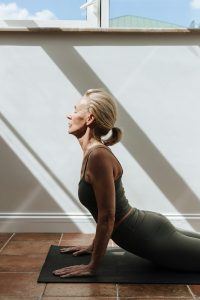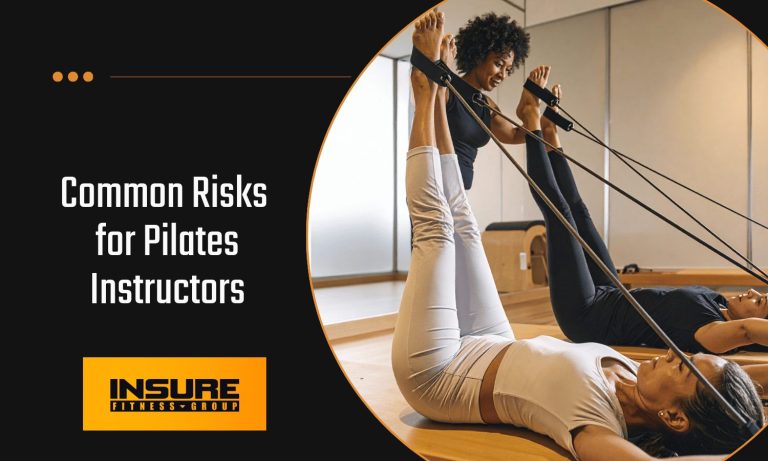Why Trainers Should Focus on Fall Prevention
Talk to most seniors coming into the gym, and they’ll tell you one of their main concerns: falling. That worry comes with good reason, because 1 in 4 seniors fall each year, and 37% of those falls result in injury. As personal trainers, we play a key role in reducing fall risk. Research shows that targeted strength and balance programs improve mobility, prevent falls, and reduce hospitalizations.

Even with all this research, many seniors and caregivers are unaware that they can reduce the risk of falling through safe, structured exercise routines. When you work with a senior client, talk with them about how to incorporate fall prevention training into their program and help them reap the benefits of it. This article is a practical guide to introduce fitness trainers to fall prevention exercises and how to begin seamlessly blending them into your clients’ programs.
What Types of Fall Prevention Exercises Are Most Effective for Seniors?
Call me crazy, but integrating fall prevention exercises might be one of my favorite parts of programming. I have trained seniors for over a decade, and love coming up with new ways to get them moving and keep them upright.
As I program for senior clients, I have two primary ways of adding fall prevention exercises into their routine. The type of exercise itself, on a general level, is the first thing that I consider. Some forms of exercise easily lend themselves to fall prevention training. I look for activities that improve balance, strength, coordination, and mobility. Some of my favorite examples include:
- Yoga – Whether your client takes a yoga class or completes a simple routine as part of their warm-up, yoga is my favorite way to help seniors feel stable. Many people feel uncertain or anxious about balancing exercises, but when they are performed in a calm, intentional way during yoga, that performance anxiety seems to decrease.
You can work with your clients on balancing poses like tree pose or focus on dynamic weight shifts as they move from a high lunge to warrior II. Yoga also improves mobility and core stability, which aid in fall prevention as well. Look for styles like hatha or Iyengar for senior-friendly classes and poses.
- Tai Chi is another excellent way to train balance and reduce fall risks. I have found that it is an excellent fit for older adults who have difficulty with fast, dynamic movements, or ones who benefit from more joint-friendly workouts. It pairs incredibly well with strength training and/or yoga for a well-rounded exercise program. You can often find Tai Chi classes at senior centers, community centers, or other senior-serving groups in your area.
- Strength training is the bread and butter for most trainers, and there’s no reason you can’t add fall prevention to what’s already working for your clients. Building strength helps decrease fall risk, and added muscle can lessen the risk of injury if a fall does occur. Exercises that target the leg muscles, abdominals, hips, and core are especially effective at providing stability and strength where seniors need it most.

This brings me to the second way to easily incorporate fall prevention training into your clients’ routines. Once your client is engaging in activities like the ones above, you can dive into more specific exercises and techniques to build on the general activities.
Try exercises like:
- Sit-to-Stand – Have your client sit on a sturdy chair, bench, or platform with their feet flat on the ground. Have them stand up without using their hands if possible, then return to their seat and repeat. This helps build leg and glute strength while teaching weight shifting. Add an extra challenge by having them hold a medicine ball.
- Single-Leg Stand – Starting with your client holding onto a rail or sturdy object, have them balance on one leg for 15-30 seconds. Cue their form as needed to help them engage their core and not lean into the standing hip. When they are ready for a progression, have them stand on a cushioned mat, foam pad, or with their eyes closed.
- Heel-to-Toe Walk – Once your client has mastered a single-leg stand, have your client add a dynamic element by walking heel to toe. Walking next to a wall or railing can be a great way to provide extra support as they gain confidence in their abilities and coordination. For variations, have them walk backward or change them out for side steps or gate drills.
You can also add simple modifications to exercises you’re already doing, such as:
- Performing an exercise on one leg (e.g., overhead press, bicep curl, inclined plank).
- Add a dynamic element to a static exercise (e.g., a ball toss or reach during an isometric exercise).
- Weight shifting along with another activity (e.g., skullcrushers while walking around the gym, lunge and bicep curl together).
Get creative with it! Oftentimes, the more out-of-the-box an exercise is, the more effective it is, because it challenges both the mind and body. You may get some weird looks at first from both clients and other gym goers, but as people begin to see results, they’ll be less skeptical and more enthusiastic.

This was certainly the case for me. I started doing a lot of balance training on my own after an injury, and then started adding it into my clients’ routines, both old and young. We did some fun and quite unusual activities, and it became one of the highlights and big selling points of my programs. Doing the exercises together and thinking about them as real-life scenarios helped take away some of the “I have to do this exercise exactly right” feeling and allowed room for imperfect attempts. This leads us right to the next most important part of fall prevention training – confidence!
How Can Trainers Adapt Exercises Safely for Older Adults Who Feel Unsteady?
Equally as important as training the body to reduce fall risk is training the mind. Especially if a client has fallen before or even had a close call, they may feel unsteady and lack confidence. This can all change with gentle encouragement and a safe and supportive environment. When doing fall prevention exercises with seniors, it is always a good idea to have safety measures in place to prevent falls while you’re working together.
Creating a Safe Exercise Environment
Start by creating a safe place for them to perform the exercises. Begin with exercises that can be done standing in place. Have a railing, countertop, or sturdy object in front of them, so they have a visual object to hold onto. Having a chair behind them can also provide a sense of comfort if they need to sit down. If you’re training a client in the gym, they’re probably wearing shoes, but if they are exercising at home, ensure that they have nonslip socks or shoes to reduce the risk of falling.
Once you’ve set up a safe environment, let them acclimate to it. When I have an apprehensive senior client, I like to bring them to the area we’ll be exercising in and then just sit or stand and talk there for a few minutes. It helps them relax in the space instead of jumping right into what scares them. Walk through the exercise with your client so that they know what they’ll be doing.

Building a Base of Confidence
It may also be helpful to normalize the shaking and unsteadiness that typically accompany balancing and like exercises. Proprioceptive movements, like the small adjustments that occur in the ankle while balancing, are normal, but many people interpret them as unsteadiness. But if you can teach your clients about these micromovements, they’ll have more confidence when they feel those shifts.
Encourage your clients to perform the exercises at their own pace and in a way that makes them comfortable. Set them up for success by teaching them to stand upright in a strong, stable stance. Start exercises with both hands on a support, and then transition to a single hand, and no hands when they’re ready. Provide adequate time between exercises to rest and relax.
Another way to build confidence in your clients is to talk with them about ways they can practice or implement fall prevention measures at home. Falls often occur at home in bathrooms, at night, or in cluttered spaces. Show them how the safety precautions taken at the gym can be done at home. Simple fixes like adding nightlights, removing or tacking down rugs, and removing trip hazards can go a long way in reducing the risk for falls.
How Do You Teach Fall Prevention Exercises to Seniors Effectively?
The best piece of advice for effective fall prevention teaching is to start with the basics. Never underestimate the power of a simple stand or weight shift. This goes for your teaching, too. The way you teach and cue is just as important as choosing the right exercises.
Here are five simple ways you can improve your fall prevention teaching techniques:
- Give clear, concise instructions with cues like “Place your right foot in front of your left.” Provide step-by-step directions that are easy to follow.
- Encourage and demonstrate stable posture when standing: feet are slightly apart, arms relaxed, and core is engaged. Begin each exercise from a position of stability and return there at the end.
- Encourage slow, controlled movements. It may be helpful to measure exercises by time, rather than by reps, when doing fall prevention training. People tend to hurry through reps, but are more intentional about movement when each one is not being counted.
- Progress exercises gradually. Build confidence and competence by starting with exercises that clients can do with ease, then build on exercises by adding an element or increasing difficulty.
- Connect clients with other resources. If your client has family or friends at home or nearby, encourage their involvement during at-home practice. If they live alone, invite them to practice at the gym or at a community or senior center if there are concerns for their safety.

The last, and one of the most critical, pieces of advice that I would offer anyone training senior clients is to approach it from a place of empathy and encouragement. The fear of falling can greatly eat away at a person’s sense of independence. So rather than teaching simply to avoid falling, teach strength, teach mobility, and teach balance.
Support Your Clients and Protect Your Career
There is so much fulfillment in helping seniors gain or regain the skills they need to move confidently through life without falling. It is, without a doubt, one of the most valuable skills we can bring to senior clients. By choosing exercise modalities and specific exercises, adapting them with care, and teaching with patience, we can help seniors stay safe and independent.
Remember that you are responsible for your clients’ safety and your own professional protection. Get coverage for your clients no matter where you train with Insure Fitness. Get your policy today and be protected for tomorrow.





